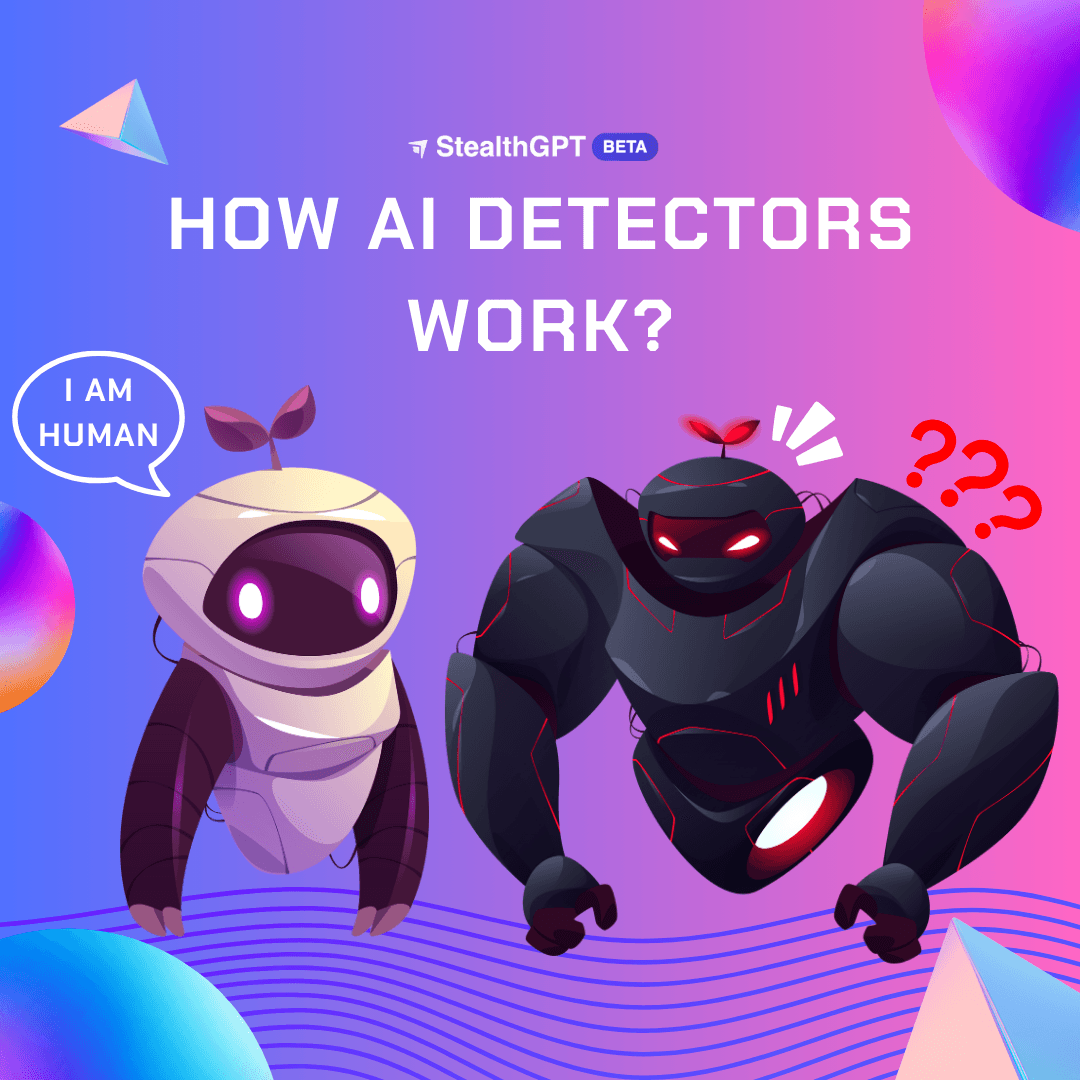Blog, AI Detector
How do AI Detectors Work? Everything You Need to Know
AI detectors follow specific algorithms to identify the use of AI in content generation. Yet, ever since AI detection became a thing, there hasn't been any satisfactory explanation of how these softwares work. Copyleaks, for instance, narrates how its plagiarism checker works. But when asked how its AI detector works, it supplies a pretty vague response.
In this article, we'll answer the question, “How do AI content detectors work?” We promise that this answer will touch everything you need to know about them. Let's start.
Table of Contents
Introduction
What is an AI detector?
Are AI content detection tools accurate?
7 ways through which AI detection tools work
How reliable are AI writing detectors?
Conclusion
What Is An AI Detector?
An AI detector is an artificial intelligence software that detects AI-generated text. Following the advancements of many generative AI language models, AI detectors rose to fame. The best AI detectors support many languages. StealthGPT, for instance, supports English and over 7,000 other languages.
AI detectors identify AI-generated content through many means. Some of them include: natural language processing, machine learning, linguistic analysis, and text classification. The most widely known method of flagging AI-generated content is measuring the perplexity and burstiness.
Are AI Content Detection Tools Accurate?
A few members of the European Network for Academic Integrity (ENAI) wrote a paper on the testing of AI-powered detection tools in 2023. In the paper, they shared the discoveries of independent researchers who studied the accuracy of these tools. One of those researchers, Van Oijen, reported that the best AI content detector that he tested was just 50% accurate. Meanwhile, Gao and others found that the GPT-2 Output Detector was 66% accurate at detecting content that ChatGPT wrote.
Meanwhile, Openai has claimed that AI content detectors aren't accurate. Our findings reveal that this statement is fake news. The company most likely gave that misinformation because its AI classifier performed poorly. At StealthGPT, we assure you that our AI detector is accurate. If you try our AI checker for yourself, you'll discover that we're saying nothing but the truth.
Some higher education institutions still have some doubts about the accuracy of AI detectors like Turnitin, though. The University of Texas, for example, has discouraged the usage of Turnitin to detect AI-generated text in academic submissions. But then, Turnitin has admitted that its AI detector may produce inaccurate results sometimes.
All that said, there's no doubt that we still need AI detectors. This is because human editors are still struggling with telling AI-generated text from human text. Therefore, as long as AI language models are in use, AI content detectors will be relevant. On this note, we'll move on to examining how AI content detection tools work.
7 Ways Through Which AI Detectors Work
Tokenization
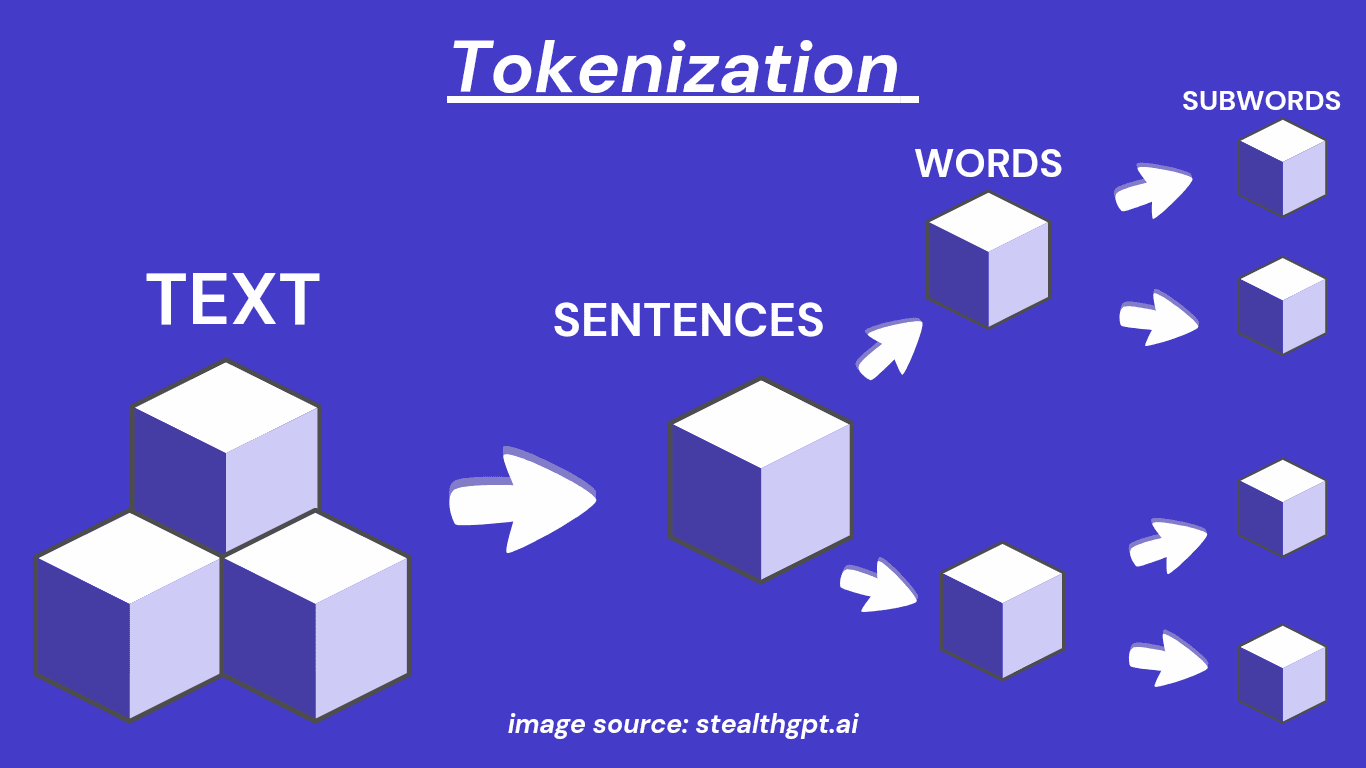
Tokenization is a fundamental step in AI detection. It involves reducing the text to tokens. These tokens may be words, sub-words such as prefixes and suffixes, characters, and sentences. Before tokenizing text, the AI content detection tool changes the text into lowercase. Then, it splits the text into tokens of a particular category.
For instance, let's assume that an AI detector wants to find out whether the sentence, “StealthGPT emerges as the best AI detector,” is AI-generated. It may first change the text to lowercase. Then, it'll reduce text to the following tokens: stealthgpt, emerges, as, the, best, ai, and detector.
Tokenization helps the AI content detection tool to count how many times tokens appear in the text. The tool also checks the parts of speech of the tokens and assesses the writer's overall vocabulary. These assessments will help it decide whether the text is AI-generated or human-written content.
N-gram Analysis
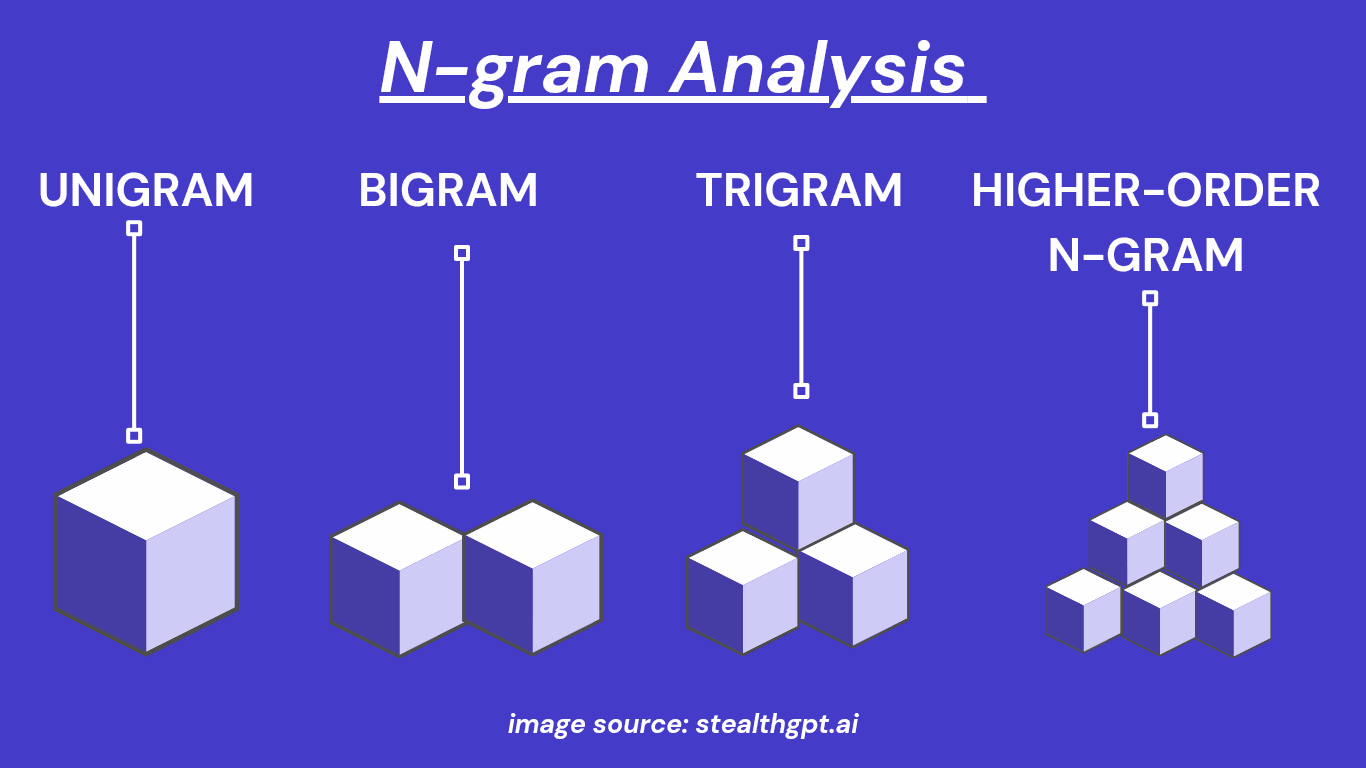
N-grams? What are they? An n-gram is a sequence of tokens. The classification of an n-gram depends on the number of tokens in it. We refer to an n-gram containing one token as a unigram.
If the n-gram has two tokens, we call it a bigram. Where we find an n-gram containing three tokens, we call it a tri-gram. A higher order n-gram has more than three tokens. It's more complicated than the other types of n-grams that we just named.
How does an artificial intelligence tool use n-gram analysis in detecting AI content? After tokenization, the software groups tokens into different levels of n-grams. Then, it checks how many times these n-grams occur in the text. When many n-grams appear many times, the AI detection tool believes that the text is probably AI-generated.
See this screenshot, for example:

We generated this text using Copilot. If you read it, you'll notice that the phrase “blackberries are” appears more than once. This phrase is a bigram because it contains two tokens, “blackberries” and “are.” We'll now input this text into StealthGPT’s AI checker. Here's a screenshot of what StealthGPT thinks about the text:
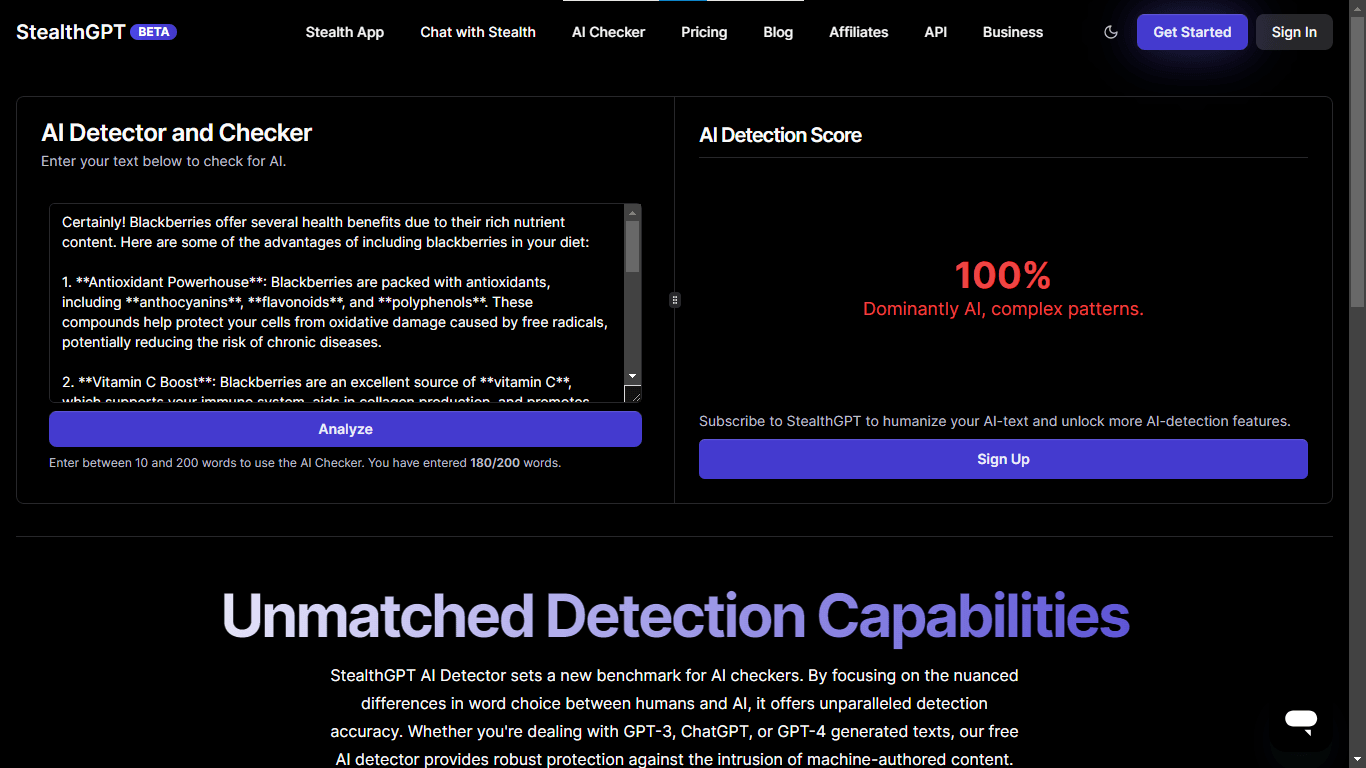
Obviously, StealthGPT could tell that the text was 100% AI-generated. One of the ways through which StealthGPT arrived at this conclusion was n-gram analysis.
Machine Learning Classifiers
A machine learning classifier is an algorithm or or a series of steps. An AI detector follows these steps to categorize text as AI-generated or human-written. First, the tool gathers large quantities of text that LLMs such as ChatGPT, GPT 3, and GPT 4, have written. This text will serve as its training data. It collates the data in datasets. Then, it adds human-written texts to these large datasets.
At this point, all of those texts are like random flying pieces that the software needs to organize to understand. So, it proceeds to tokenize the data. After this, it extracts specific features from the datasets. The features may be linguistic patterns, vocabulary, and sentence length.
Use our Free AI Detector to check your content
When you ask the software to analyze new text, it scans the features of the text. Based on the content’s features, the app categorizes it as human-written. For instance, if the text has a uniform sentence length and pattern, the tool declares that it's AI-generated.
But before an AI detector becomes available to the public, it undergoes a series of tests. These tests evaluate its efficiency based on certain metrics, such as its accuracy and precision. All of the data relating to its accuracy and precision is presented in a table. This table is the confusion matrix. It shows the number of true positives, true negatives, false positives, and false negatives.
The confusion matrix element that most affects the tool’s performance is the false positive. When we say that the tool has given false positives, we mean that it has produced incorrect predictions. In other news, the AI writing detector has misidentified the source of text. AI detector tools that give many incorrect predictions are unreliable.
Deep Learning
Deep learning involves using pre-trained transformer models for binary classification. Pre-trained transformer models include GPT 3, GPT 4, and BERT. These models are called “pre-trained” because their makers have trained them with large text datasets. Training enables them to understand the differences between human-written text and AI-generated text.
In understanding these differences, the models must pay attention to the different ways in which words may be used in different sentences. Armed with this knowledge, the pre-trained model does something called binary classification. Binary classification is the process of labeling text as either human-written or AI-generated. Each class is represented with a binary digit, which could be 0 or 1.
Therefore, when the AI detector scans new text, it tokenizes the text. Next, it labels the tokens as either human-written or AI-generated. It then uses this labeling to predict the probability that the text is AI-generated.
Stylometric Analysis
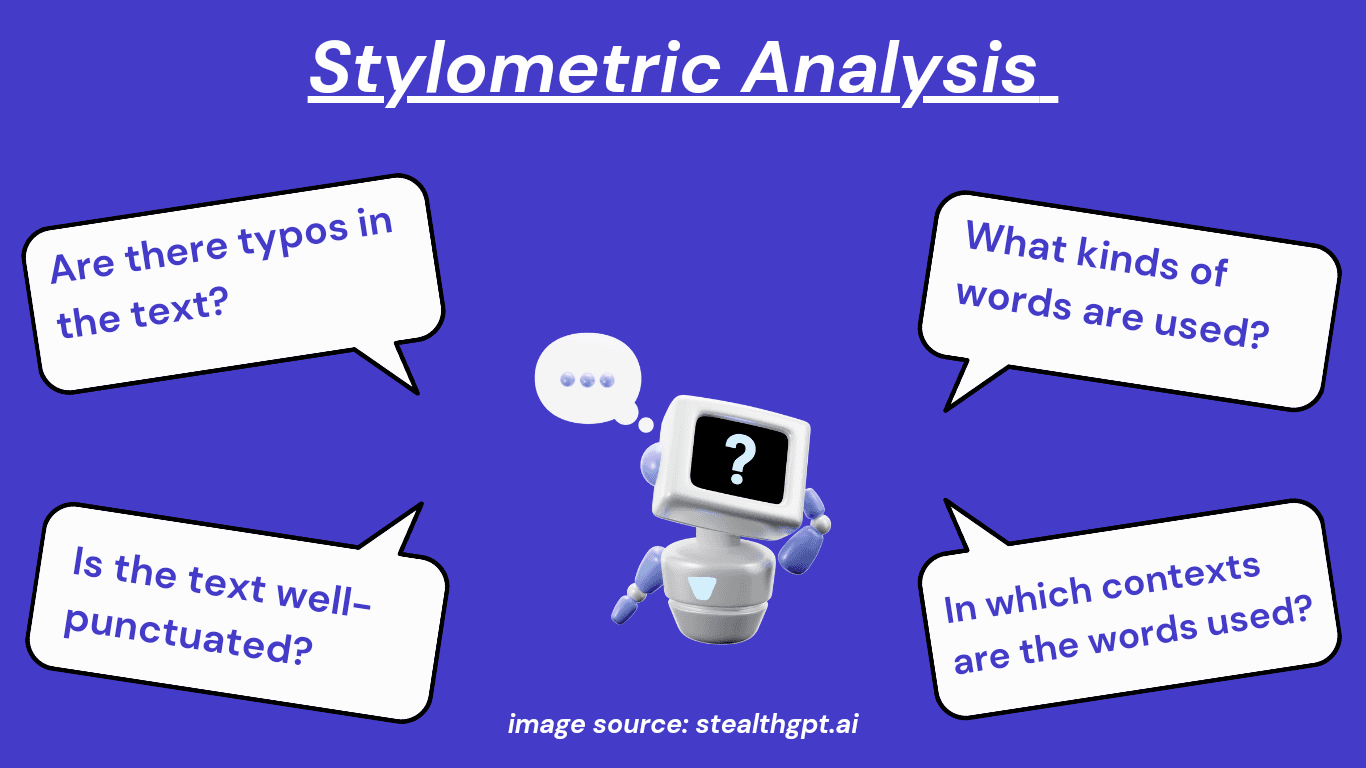
During stylometric analysis, the AI detector looks closely at the writing style of the text. It considers the word choices. Are they all big words, small words, or a mix of both? What about the punctuation? Is the text correctly punctuated from start to finish?
Are there any typos in the content? Are the sentences all long, short, or of medium-length? In which contexts are the words used? AI detectors ask themselves these questions and many others when identifying AI content. The answers help them decide if the text is human writing or not.
In truth, though, stylometric analysis isn't that effective. These apps’ knowledge about human writing and AI writing is limited. Consequently, if they come across content that's crafted with undetectable AI software like StealthGPT, they may mistake it for human writing.
Behavioral Patterns
AI language models have been trained with content writing formulas. They're told to write in a certain way. These formulas guarantee a consistency in the ebb and flow of content. But they also make the text too polished and predictable.
For instance, when asked to write an article on a topic, ChatGPT will start with a short introduction. It'll most likely continue with a H2 that starts with “Understanding (topic).” It may begin the second paragraph of every new section with “additionally,” “moreover,” or “furthermore.” Most AI writing tools that are powered by GPT 3.5 or 4 write like ChatGPT.
Conversely, human content is less repetitive and monotonous. But that's not to say that you won't ever find human-written works that sound like AI writing. These works are more common in the academic writing field. They're responsible for many of the false predictions that AI detectors yield.
Perplexity and Burstiness
Perplexity and burstiness are siblings.
Perplexity
When an AI detector accurately guesses the sequence of words in a passage, that passage has a low perplexity. Think of it this way: the AI detection tool didn't have any trouble predicting which words would come next. If a piece of text has a low perplexity score, it’s most likely a product of an AI writing tool.
Burstiness
AI content detection tools also consider whether there are word clusters that recur throughout the text. When there's a high number of word clusters sprinkled throughout text, it has a high burstiness. AI-written text is usually more bursty than what humans write. However, an AI writing detector can't rely on counting word bursts alone to determine the author of a piece of content.
At times, humans repeat word clusters often when writing. SEO content writers, for instance, have to place keywords at strategic spots within content. This is an effort to use keywords to rank on Google and other search engines. It wouldn't be fair for these articles that human writers have taken their time to write to be flagged as AI-generated.
How Reliable Are AI Writing Detectors?
Many AI detection tools like Turnitin have advised that teachers shouldn’t rely on AI detection scores to punish students. The reason for this disclaimer is that AI writing detectors sometimes produce wrong predictions. The instances of such predictions may vary from tool to tool. However, the possibility of inaccuracy serves as a reminder to use AI detection tools with caution.
Conclusion
Learning how AI detectors work is important when you want to manually detect AI content or avoid AI detection. These bots are modified and improved every day. Looking for a reliable AI detector? Try StealthGPT’s AI checker.
FAQs
Is SEO spam harming Google search results in 2024?
SEO spam still harms Google search results in 2024. However, since April, Google has tweaked its algorithm to make it harder for low-quality content from SEO spammers to rank high. These changes ensure that only high-quality, original content rank high on Google. There's now a 45% decrease in the level of low-quality content displayed in search results. Consequently, those who have worked hard on the optimization of their content enjoy more rewards.
Will Google accept AI content?
Mass-producing AI content and optimizing it for SEO isn't enough. But that's what many blog owners do. As a result, they flood Google with many articles that are created for search engines rather than real users. So, when someone searches for something on Google, they find many high-ranking results that don't provide the information they need.
To solve this problem, Google has prioritized high-quality content. This content is the kind that portrays expertise, experience, authoritativeness, and trustworthiness (EEAT). If a piece of content meets the EEAT guidelines, it's more likely to rank high on Google.
However, almost all AI content writing tools can only create generic content that'll harm your site's ranking. How then can you get AI-generated content to conform to Google's guidelines? That's easy. Use StealthGPT's SEO writer. This tool helps you write undetectable AI SEO-optimized blogs that will rank high on Google. By humanizing AI content, you increase its value in the eyes of Google and end users.
Can artificial intelligence be biased?
A group of researchers tested GPT content detectors with text written by non-native English speakers and native English speakers. These detectors thought that works written by non-native speakers were AI-generated. But, they correctly identified the texts written by human writers.
These discoveries made the researchers think that AI detectors were biased. However, we believe texts by non-native speakers may have been misidentified due to likely being less cohesive and coherent.
